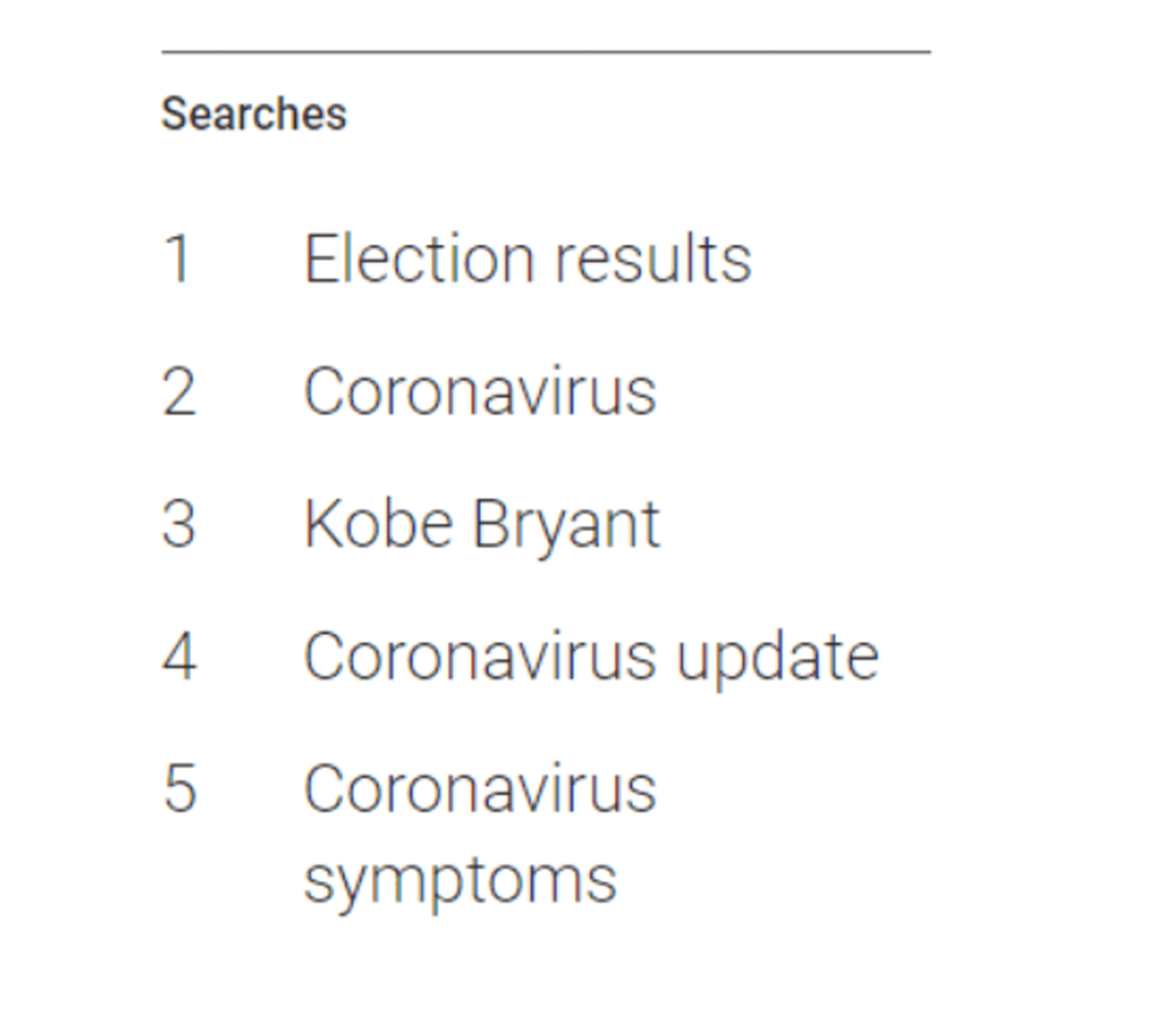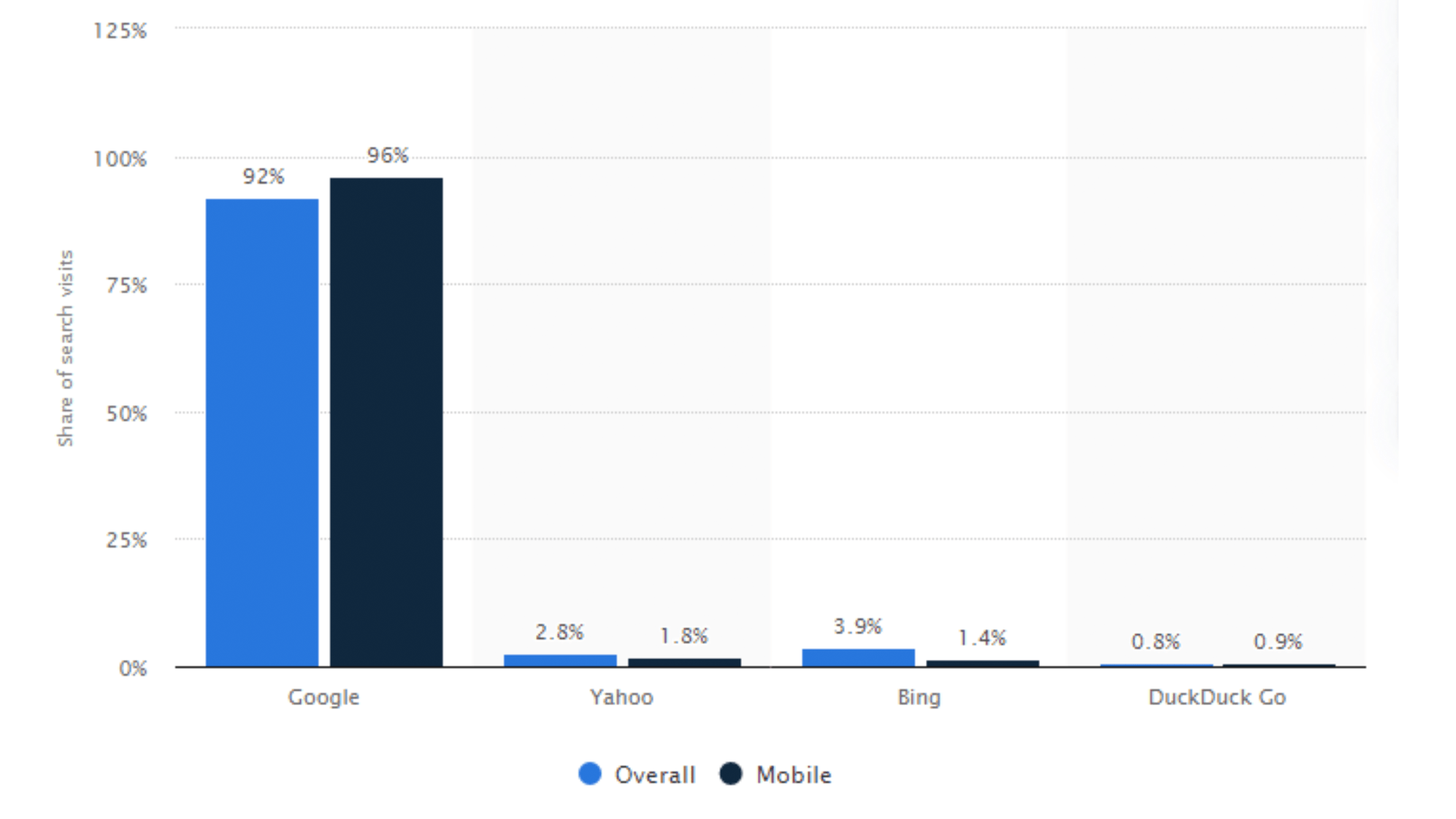When you think of technology or the internet, it’s hard not to think of Google. Since the beginning of the digital revolution, Google has been known as the most common search browser for desktop and mobile uses.
Since 1998, people have been given the luxury of “googling” things they want to know, allowing Google to effortlessly become the number one search engine in the world.
Google is an American multinational technology company that developed internet-related services and products. Most popular is Google’s search engine, but the company also offers online advertising technologies and cloud software.
Google is considered one of the “big five” technology companies globally, next to brands such as Facebook, Amazon, and Apple.
Understanding Google searches can be important to your business’s growth as, in most cases, potential clients will be searching the web for products or services they need. Through SEO (search engine optimization) and other marketing tools you can put to use, your company will be found through any Google search using keywords, bringing more traffic to your landing page.
This can be crucial to your company’s development, the customer base you create, and your business’s overall success.

The ultimate list of Google search statistics you need to know this year.
1.) Google began as a Ph.D. project at Stanford University, slowly gained traction, and is now the number one search engine globally. (Statista)
2.) Founded in 1998, Google is a multinational internet service corporation headquartered in California. (Statista)
3.) In September 1999, a year after being launched, Google was already answering 3.5 million search queries per day. (LiveStats)
4.) Google search is one of the most popular websites in the U.S. (Statista)
5.) Google receives over 3.5 billion searches per day worldwide. (LiveStats)
6.) In the most recently reported fiscal year, Google’s revenue was 181.69 billion US dollars. (Statista)
7.) The revenue Google generates is primarily of advertising revenue; in 2020, it amounted to 146.9 billion US dollars. (Statista)
8.) The majority of advertising revenue on Google comes from search advertising. (Statista)
9.) In the U.S, the market leader processed 12.38 billion Google search queries. (Statista)
10.) In the fall of 2020, Google was ranked top amongst the most visited multi-platform web properties in the U.S. with a little more than 267 million U.S. visitors. (Statista)
11.) Since the introduction of Google Search in 1997, all search engines’ worldwide market share has been lopsided, with Google taking over. (Statista)
12.) Among the leading search engines, the worldwide market share of Google in January 2021 was almost 86%. (Statista).
13.) Google has overtaken the search engine market, with a 92% market share as of February 2021. This number is continuing to rise. (Statista)
14.) One of the largest internet companies worldwide is currently Alphabet, the parent company of Google. (Statista)
15.) Google parent company Alphabet’s market capitalization as of June 2020 was 977.76 billion U.S dollars. (Statista)
16.) Google Search remains Alphabet’s core web-based product along with advertising services, communication and publishing tools, development, statistical tools, and map-related products. (Statista)
17.) Google is popular in the US and is also the dominant internet search provider in many other major online markets around the world. (Statista)
18.) YouTube is one of the most prolific and expensive acquisitions Google has made. It has been integrated into the online presence Google has, helping to change the dynamics of user-generated content and online video curation. (Statista)
19.) As of January 2021, the Google Maps app was accessed by 52% of mobile audiences in the U.S. Google’s video platform YouTube was ranked first with a 72% audience reach. (Statista)
20.) Websites may attract users to their search engines by offering a range of additional free services, such as e-mail, news, social networking, entertainment, and other information, which is what Google has done. (IBIS)
21.) Besides the popular search engine, Google also owns the world’s most popular web browser (Google Chrome), email service (Gmail), and GPS mapping service (Google Maps). (Statista)
22.) The Google Play Store has the largest number of available apps with 3.14 million apps. (Statista)
23.) In 2020, consumer spending on mobile apps VIA the Google Play Store was 10 billion U.S. dollars. (Statista)
24.) Google is a one-stop-shop for all of your different online needs. (Statista)
Understanding Google Trends and Google search statistics.
25.) Using “Trending Searches” on Google, you can find search queries that have seen a spike in popularity over the past 24 hours. (Ahrefs)
26.) As of September 2020, translation-related topics accounted for 13% of Google searches worldwide, while social networks totaled 11% of global Google Search queries. (Statista)
27.) Between January 1st and December 31st, 2020, “Google” was the most popular search query on the Google search engine, while “Weather” was ranked second. (Statista)
28.) Search engines like Google typically provide search services for free and earn income when a user clicks on an advertising link; this is known as a “paid click.” (IBIS)
29.) Search has dominated internet advertising in the U.S. with a 44% share. (Statista)
30.) In 2020, the Covid-19 pandemic, the presidential election, and the “Black Lives Matter” protests were the most popular trending Google searches. (Statista)
31.) According to the “Year In Search,” the top Google searches in 2020 in the U.S. were election results, Coronavirus, Kobe Bryant, Coronavirus update, and Coronavirus symptoms. (Google Trends)

Mobile Google search statistics vs. desktop search statistics.
32.) There are over 3.97 billion Internet users worldwide. (Statista)
33.) Marketers should decide between mobile and desktop based on the differences in their use and how it can benefit their business. (Forbes)
All about desktop Google search statistics:
34.) Google was responsible for almost 90% of global desktop search traffic in 2020. (Statista)
35.) In 2019, Internet users spent roughly 2 hours online VIA desktop. (Statista)
36.) Google accounted for 62% of the U.S. desktop search queries. (Statista)
37.) With a 60% share, Google’s browser, Chrome, is the dominating figure in the U.S. desktop browser market. (Statista)
38.) Google Chrome has been the most popular desktop browser in the U.S. since December 2013. (Statista)
39.) Google Chrome OS overtook Apple OS in 2021, with a market share of 11% globally. (Statista)
40.) As of September 2019, 34% of the U.S. Google Search users’ VIA desktop were able to solve their queries with Google searches without clicking further, while 7% of searches were directed to other Alphabet-owned websites. (Statista)
41.) 49% of Google searches and other sites through desktop devices resulted in PAA (people also ask) features. (Statista)
42.) In 2020, Google Chrome accounted for about 66% of the global desktop internet browser market share. (Statista)
43.) The desktop PC market is expected to amount to around 10.5 billion U.S. dollars by 2021. (Statista)
All about mobile Google search statistics:
44.) Mobile accounts for about half of the web traffic worldwide. (Statista)
45.) Internet users are gradually switching to mobile devices to browse the web. (Statista)
46.) In 2019, internet users in North America spent roughly 4 hours online VIA mobile devices. (Statista)
47.) In 2020 there were 211 million mobile search users in the U.S. (Statista)
48.) “Chrome for Android,” the mobile browser created by Google, accounted for 35% of the global web browser market share. (Statista)
49.) Google was the leading search provider on mobile devices in the U.S, accounting for almost 84% of the market share as of October 2020. (Statista)
50.) With 54% reach among mobile audiences, Google Search is one of the most popular mobile apps in the U.S. (Statista)
51.) In early 2021, Google accounted for 93.22% of the search market in the U.S. on mobile devices. (Statista)
52.) 71.5% of all Google search ad clicks were VIA mobile search. (Statista)
53.) Mobile search ad spending in the U.S. is expected to grow from 29 billion U.S. dollars in 2019 to 47 billion in 2024, this number continuing to grow. (Statista)
54.) Google is the most popular publisher of apps for mobile devices in the U.S, based on downloads alone. (Statista)
55.) In 2018 63% of paid Google search clicks in the U.S. originated from mobile, with mobile phones accounting for nearly 56% of all clicks. (Statista)
56.) The most popular categories of local search lookups VIA mobile were food and entertainment. (Statista)
57.) In August 2020, 52% of mobile searches in the U.S. featured People Also Ask (PAA) results on search engine results pages (SERPs). (Statista)
58.) In 2020, studies found that mobile devices accounted for 56% of organic search engine visits in the U.S. (Statista)
How do I find out how many people search for something on Google?
59.) Google Trends can be used to understand how often people are searching for certain terms on Google. (BusinessInsider)
60.) Google Trends can help you effectively understand the popularity of a certain topic among a targeted audience regarding search frequency. (BusinessInsider)
61.) Google Keyword Planner can be used to show absolute search volume data, while Google Trends would be used to show the relative popularity of a search query. (Ahrefs)
62.) 49% of U.S. Google Search users were able to solve their queries on Google’s web search engine without clicking any further. (Statista)
Using Google Trends:
63.) Google Trends provides access to an unfiltered sample of different Google search requests made to Google. This can be anonymous, categorized, or aggregated to display interest in specific topics. (Google FAQ)
64.) The data from Google Trends reflects searches people make on Google every single day. (Google FAQ)
65.) The two samples of Google Trends data that can be accessed are real-time data (a sample covering the last seven days) and non-real-time data (a separate sample from real-time data that goes as far back as 2004 and up to 36 hours before your search.) (Google FAQ)
66.) Since the site handles billions of Google searches per day, it is easier to sample data and find insights that can be taken away regarding certain Google searches. (Google FAQ)
Organic Google search results.
67.) Organic SEO (search engine optimization) is a term used to describe the process used to obtain a natural placement on organic search engine results pages. (SERPs). (Webopedia)
68.) Examples of organic SEO (search engine optimization) can be using keywords, keyword analysis, backlinking, link building, and writing content relevant for human readers. (Webopedia)
69.) Search engine keywords are words that Web surfers use to conduct a search. A keyword can consist of a single word or an entire phrase pertaining to what they are searching for. (SMB)
70.) Search engines have gotten better at recognizing and understanding content while simultaneously working out what content is valuable to users. (Forbes)
71.) If you want to increase traffic to your website, one of the most important things you can do is to select valuable search engine keywords that will draw traffic to your landing page. (SMB)
72.) Google is the most important factor for optimizing your site for local search engine traffic. (Forbes)
73.) To optimize your content for local Google searches, think of the most common keywords customers use when seeking your type of business. This can include keywords related to your city or town, region, and neighborhood. Think about how your customers will search. (Forbes)
74.) As of January 2020, 40% of all U.S. online search queries contained two keywords. Three-word search terms accounted for 22% of searches, and queries up to 3 words accounted for over 80% of all online searches. (Statista)
75.) Google accounted for 92% of all organic search engine visits in the U.S. (Statista)

76.) In 2019, almost 30% of global web traffic was generated via online search usage, showing the important role these platforms play in directing and navigating users to different websites. (Statista)
77.) Google had the highest share of organic search traffic on mobile devices, with 61% in 2019. (Statista)
Starting up success for your business in 2021 with Google search statistics
By utilizing advancements in technology, engaging in your business’s online presence, from adding Google reviews to driving traffic towards your landing page, success can be attainable in 2021. Make use of Google search statistics on mobile and desktop devices to reach your targeted audience and optimize search engine content to ensure traffic towards your website.
Your website is a reflection of your business and ultimately what will attract your audience. This is what will set you apart from others, increasing sales and revenue as a result.
Driving traffic to your landing page can be what sets your business up for success in 2021.
Podium has SEO and communication tools that can help you build your website, reach your targeted audience, and in turn, drive traffic to your landing page. The tools they provide can be crucial to your business, now and in the future.
You can get started for free with Podium today.




